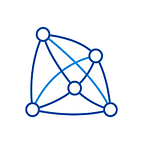There are lots of words flying around these days that sound so techy they go in one ear and right out the other. Some of us take a shot at trying to understand what exactly they mean but wind up scratching our heads with an earful of technological terms that mean nothing more than “stop trying”. Well, don’t be so quick. And certainly don’t stop trying. Hopefully, this quick post will illuminate that most-dreaded and preferably avoided term: blockchain.
Of course, blockchain sounds techy and futuristic, and it’s generally thrown into a conversation right around another term like “bitcoin” which also happens to be around the time one decides it’s time to excuse themselves for a bite of lunch. (Yes, sometimes lunchtime can come at the most convenient times.)
But let’s take a step back from the wild ether of confusing words and translate blockchain into real life language. Let’s ask ourselves how we would explain blockchain to our parents?
First, let’s start in our parents’ familiar territory. Let’s start at a bank, shall we?
Say we are looking to buy a car (this car happens to be a very nice Jeep, and we are quite willing to go into trouble to get it). Let’s say a guy named Tim owns this particular Jeep. Tim seems like a fine guy…nice enough…but with money in question, we can never be quite sure. We’re not about to hand over the money and expect Tim hold up his part of the bargain and give us the Jeep. Instead, we’re heading over to our bank.
Our bank serves as the trusted middleman for our transaction. They’ll witness our deal and make a record of it. Now, the bank holds the record of our transaction that says we gave Tim the money for his Jeep, now we ought to receive the Jeep in return. Tim gives us our Jeep, the bank gets paid and holds the record for the Jeep’s new ownership.
Now, if we ever want to sell the Jeep (turns out Jeep’s really aren’t our thing, and we’re looking at a new convertible instead) we would take our new buyer back to that same bank that served as our third party last time, hope that they still have the record of our purchase to show to the buyer, and ask them to add the new transaction to the record. Our new buyer needs to see this new record to make sure the Jeep is legit. They need proof of purchase, because for all they know it may not even be ours (sure, we look even nicer than Tim, but we can’t blame them for being careful).
Without the record, we’d be in trouble. The record.
Blockchain.
Essentially, blockchain is large a record of transactions. But we already have records, so what’s so fantastic?
Blockchain eliminates the need for a trusted third party. For example, our bank that was so nice to hold our record of our Jeep isn’t actually needed anymore. How? Blockchain is a decentralized database, meaning the record is stored on computers all around the globe. With millions of copies that anyone can access on the network at any time, we can say goodbye to the bank as our trusted third party.
Now enter Bitcoin (this isn’t your cue for lunch because we’re going to take it simple). Bitcoin is merely a type of cryptocurrency that requires blockchain to work. Why? Blockchain (the record) records the transactions for each Bitcoin. For example, say instead of a Jeep we (being enlightened by our blockchain and Bitcoin knowledge) decide to buy a Bitcoin from Tim. We aren’t about to make our trek to the bank. Instead, blockchain has records that Tim does in fact own this particular Bitcoin because he purchased it from John about two months ago. Since blockchain is a decentralized database it has records of this spread throughout the world, and we can access it on any network.
Splendid! No bank fee. No third party.
Just Tim and us and our trusted blockchain.
So…blockchain, Bitcoin. Not too difficult to understand, is it? But why is blockchain so vital to the online marketplace?
Imagine the time when an artist painted a painting, and there were no cameras and no photocopiers, leaving that single original painting. It made it easy to buy and sell the original without fake copies floating around. The introduction of the internet flooded the market with reproductions making it nearly impossible to tell which was the valued painting.
Blockchain solves this problem using a decentralized database to track the transactions of the original painting. Anyone connected to the network could go find exactly who owned it at any time. Blockchain introduced a brand new reality to the online marketplace of the future.
All this being as it is, blockchain has any number of possible applications. From the artist’s paintings to the financial market to democracy itself, blockchain could soon become a common solution for increasing ease and efficiency.
So go on with your blockchain knowledge. Be a part of that future!
